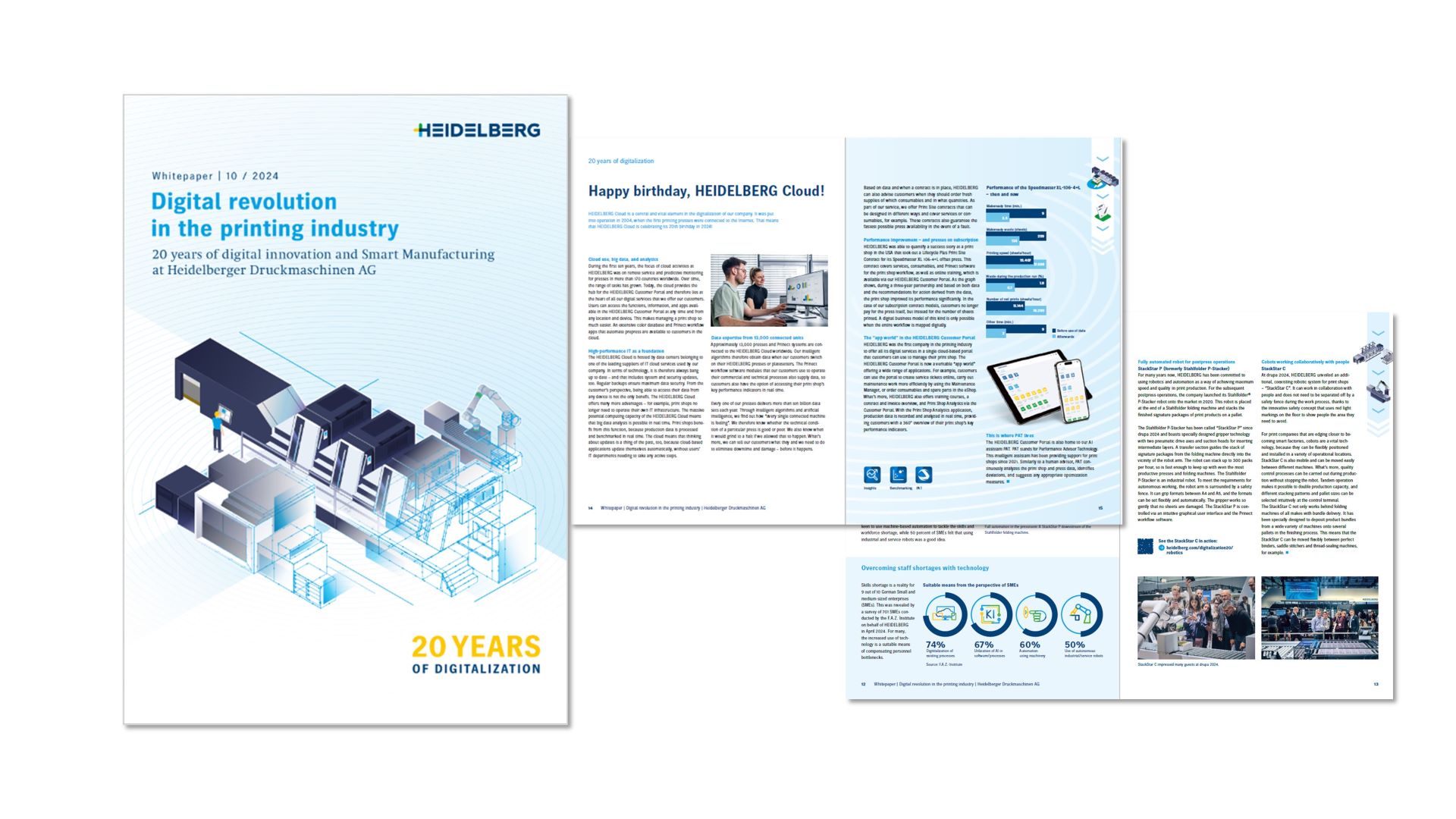20 years of digital innovation and smart manufacturing at HEIDELBERG.
When HEIDELBERG first connected one of its printing presses to the Internet 20 years ago, it marked the beginning of a technological transformation that few could have foreseen. Today, as we look back, it’s clear that this pivotal step opened up vast possibilities for intelligent, networked printing.
By 2011, as discussions around "Industry 4.0" and smart manufacturing emerged, HEIDELBERG had already been a pioneer in these areas for years, reshaping the printing industry with its innovative approaches.
From that point on, HEIDELBERG evolved from a mechanical engineering company into a technology leader, integrating digital solutions across products and services. Recently recognized as a digital champion, the company continues to push the boundaries of digitalization, offering end-to-end solutions for modern print shops, while embracing the emerging power of AI.
Discover this remarkable journey through 20 years of digitalization by exploring the hotspots in the interactive graphic.

